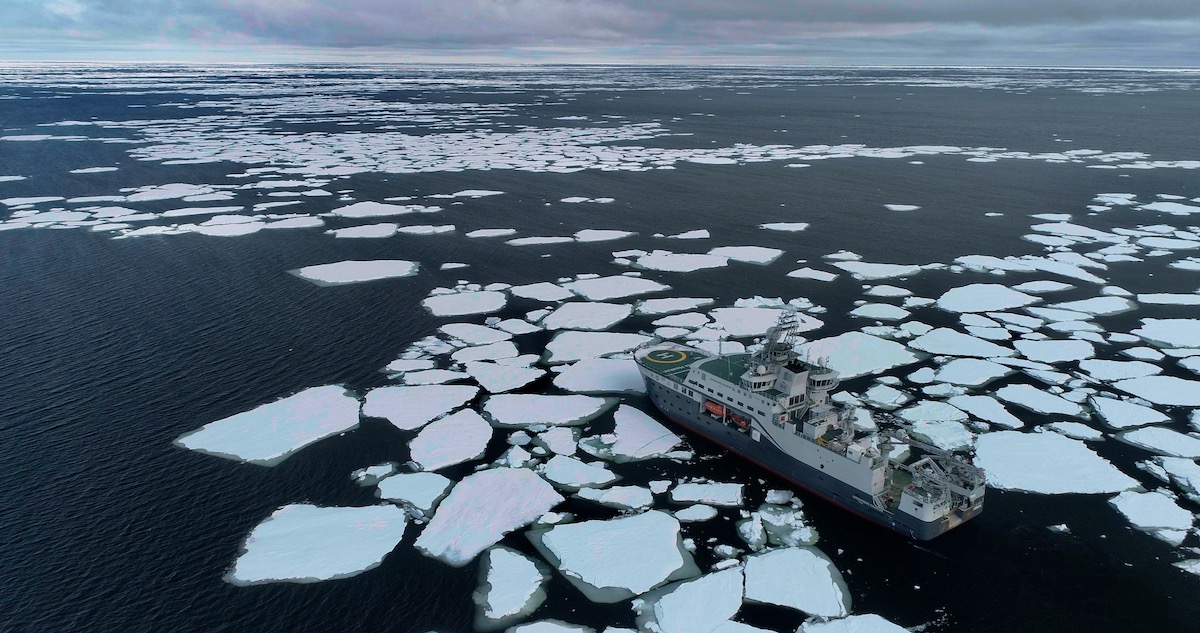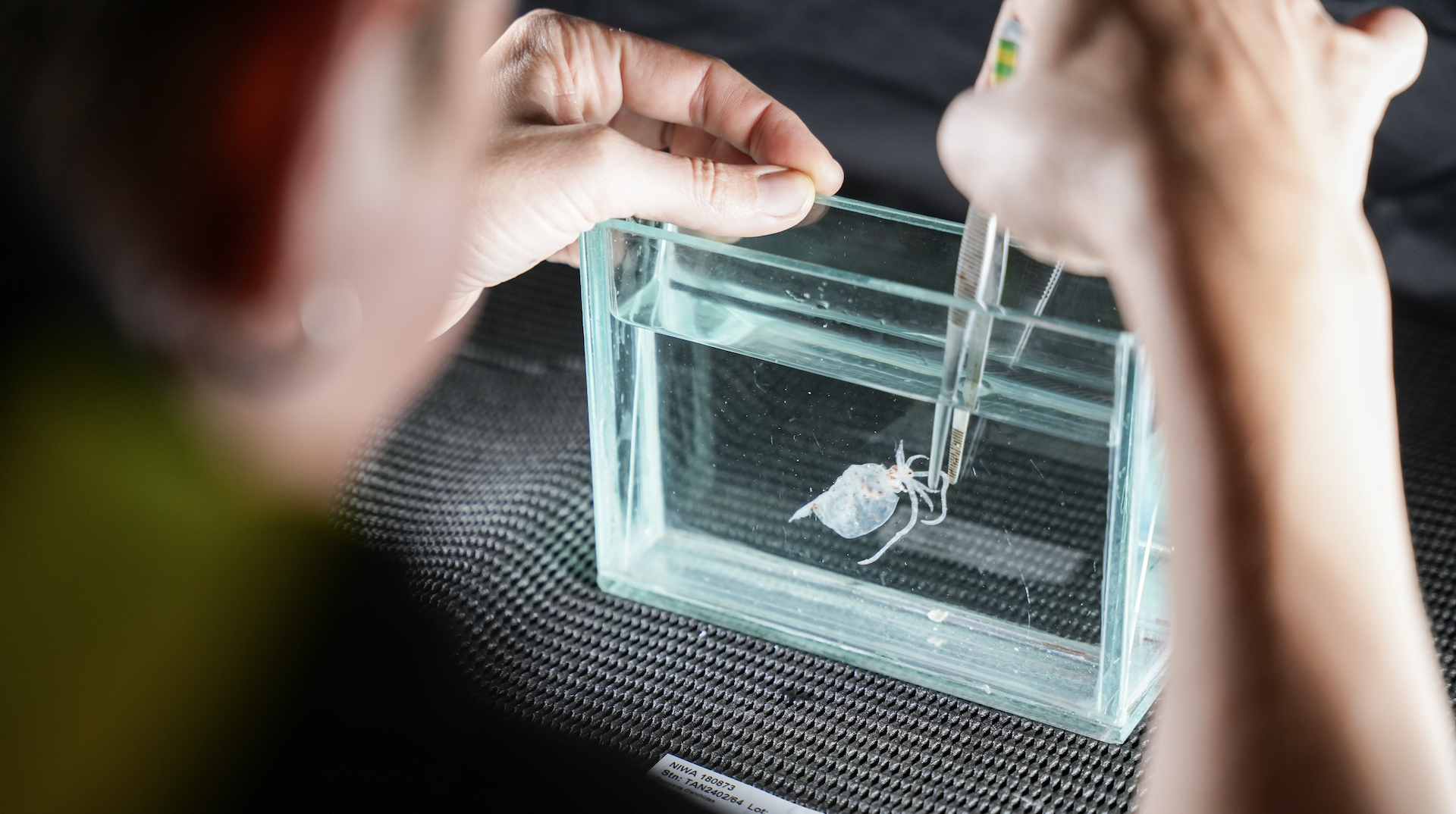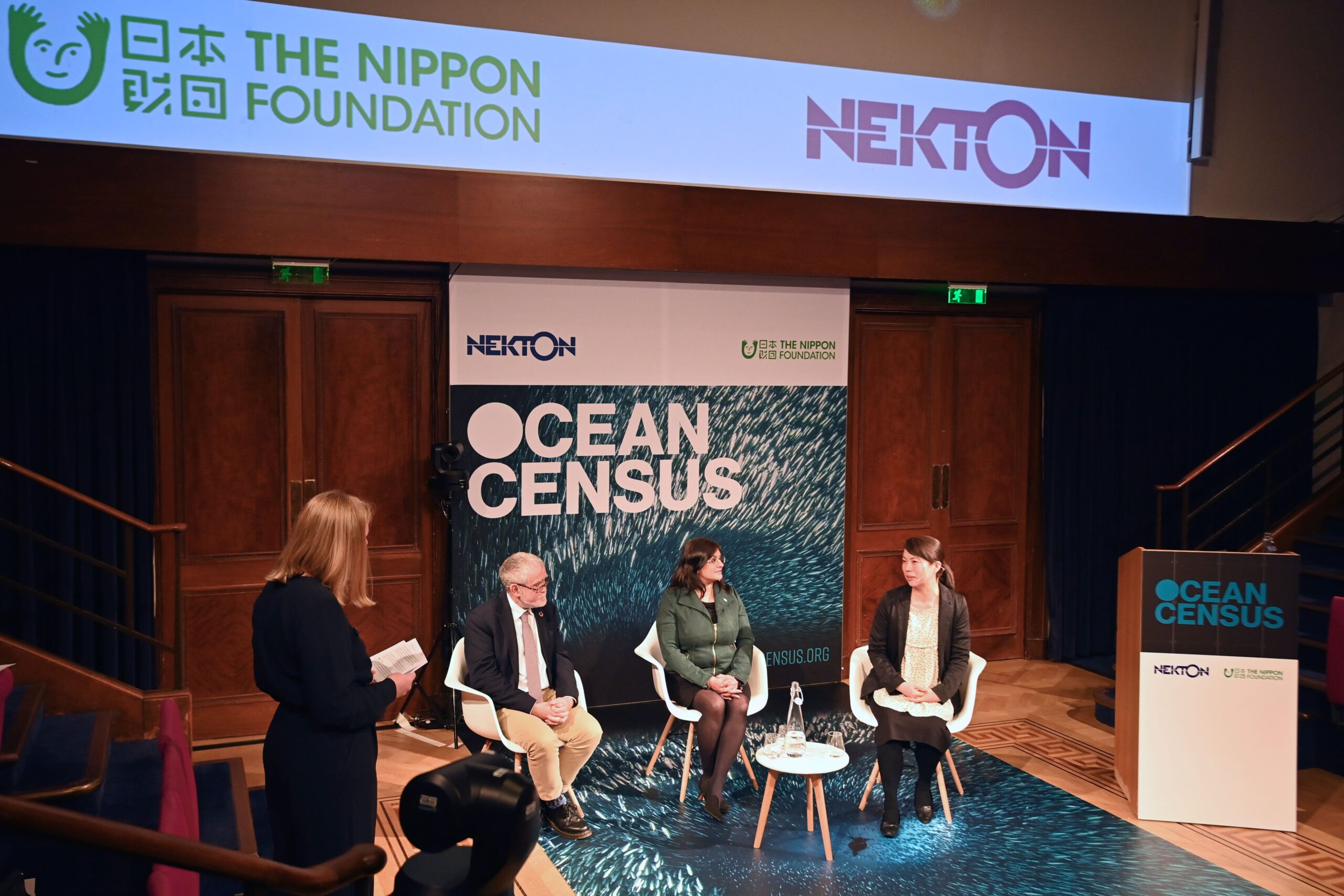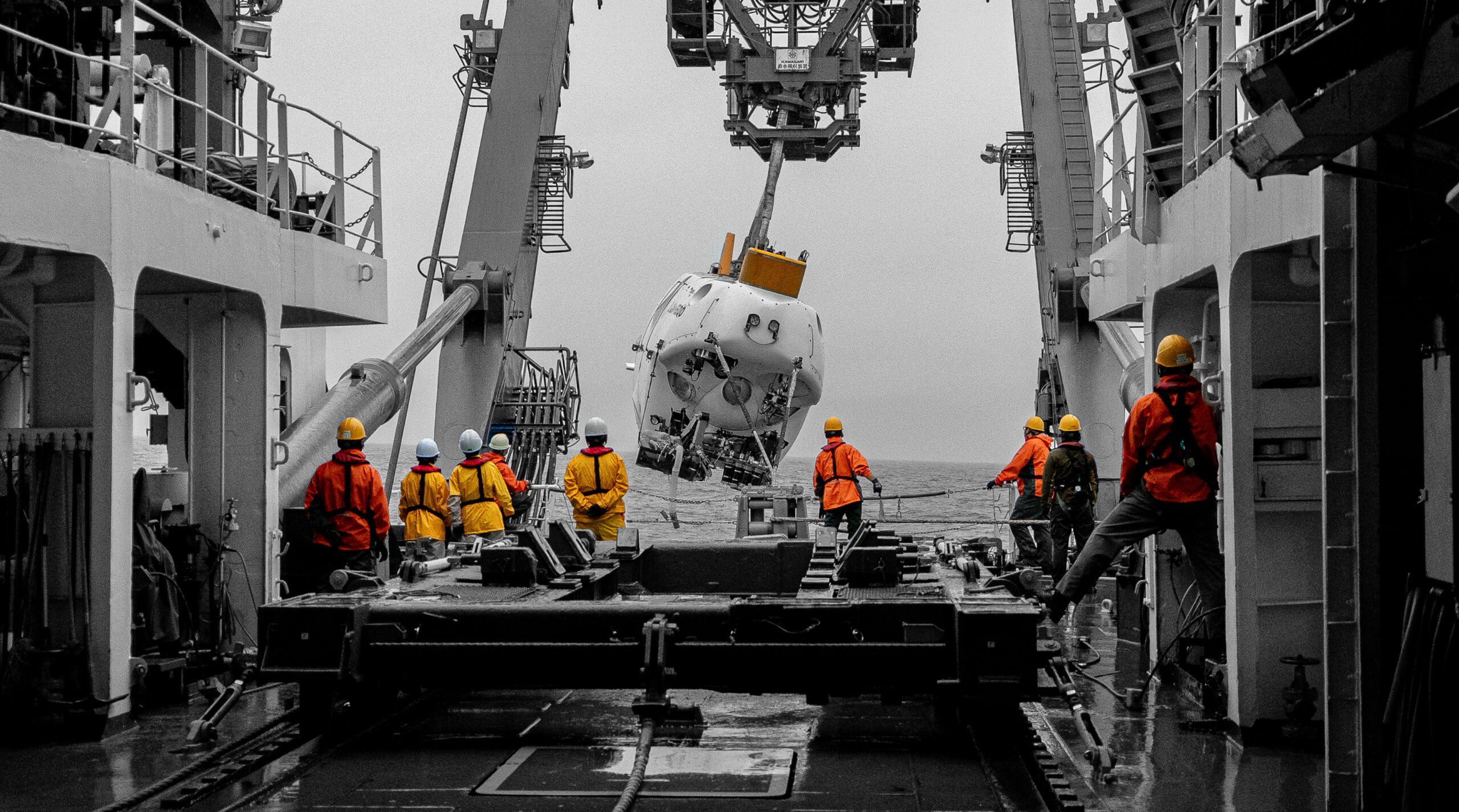

Arctic Deep – Voyage Update #3
Arctic Deep Update #3
As we travelled northwest along the Svyatogor Ridge, the seafloor plunged towards the deepest part of the Arctic Ocean. The first-year sea ice is breaking apart as the summer months approach, with vast floes streaming past us as we hover over the site.
Our primary focus for the last week of the Arctic Deep expedition has been the ‘cold seeps’ found in this region. Cold seeps spring from naturally forming methane deposits on the seafloor, and our dive sites are located near Molloy Deep—the official deepest point in the Arctic Ocean at 5550m—within the Fram Strait between the Greenland Sea and the Barents Sea.
“Invaluable for studying life’s adaptability”
Using the advanced capabilities of the ROV Aurora, alongside Conductivity, Temperature, and Depth (CTD) sensors, our team conducted comprehensive surveys at this intricate and compelling portion of seafloor. The first indications the presence of something truly remarkable were plumes of methane bubbles rising from the seafloor, and visible on the multi-beam sonar rising to within a few hundred metres of the surface.
Unlike hydrothermal vents, which depend on superheated fluids to catalyse their food chains, these cold seeps are characterised by methane. Their complex chemistry provides essential energy sources for diverse communities of organisms. At the heart of these communities are chemosynthetic bacteria, which have the remarkable ability to convert hydrocarbons into organic matter.

These habitats have been documented starting at around 150 metres, but it is not known what their maximum depth may be. They are characterised by the escape of hydrocarbon-rich fluids into the water column, primarily methane and hydrogen sulphide. Unlike the heated environments of hydrothermal vents, the fluids at cold seeps are cooler, yet may still be warmer than the surrounding deep ocean water.
These seeps are not only hotspots of biodiversity, but they also play a crucial role in understanding the global carbon cycle, some house gas hydrates that could potentially affect climate change dynamics. The stability and nutrient supply provided by these seeps make them invaluable for studying life’s adaptability and the ecological balance of deep-sea environments
“Visual data collected here enriched our catalogue of biological samples”
Our subsequent ROV dives showcased and extensive ecosystem catalysed by the chemosynthetic bacteria. The visual data collected here enriched our catalogue of biological samples, displaying vibrant communities of bacterial mats, colonies of large siboglinid tubeworms and amphipods. These findings underscore the ridge’s role as a critical habitat within Arctic deep-sea ecosystems.
At the sites dived, photo mosaicking played a pivotal role. The REV Ocean’s ROV Aurora captured 4K video footage that can be meticulously stitched together. The resulting high-resolution mosaic allows for detailed ecological assessments, enabling researchers to measure the extent of the distribution of organisms, and to monitor the dynamic processes shaping this unique ecosystem.
At the sites dived, photo mosaicking played a pivotal role. The REV Ocean’s ROV Aurora captured 4K video footage that can be meticulously stitched together. The resulting high-resolution mosaic allows for detailed ecological assessments, enabling researchers to measure the extent of the distribution of organisms, and to monitor the dynamic processes shaping this unique ecosystem.


“Halfway back to Tromsø, we visited the bleak and beautiful Bjørnøya (Bear Island)”
At the completion of ROV and sampling operations and halfway back to Tromsø we made a short stopover to visit the bleak and desolate Bear Island (Bjørnøya). Located in the Barents Sea, halfway between North Cape and Spitsbergen. Discovered by Dutch explorer Willem Barentsz in 1596, the island has served variously as a whaling base, a coal mining site, and a strategic weather station. Today, its significant bird colonies and dramatic cliffs make it an essential haven for Arctic wildlife, and its weather station continues to provide valuable data for climate change research.
As the expedition concluded in Tromsø, our team began the comprehensive analysis of collected data and samples. The insights gleaned are expected to deepen our understanding of the Arctic’s deep-sea ecosystems, particularly in relation to how life forms adapt to extreme environments. Our ship for the cruise, the Kronprins Haakon, proved to be the most capable platform imaginable for this kind of expedition. A vessel like this is nothing without its crew, and the men and women of the Norwegian Institute of Marine Research who hosted and supported this mission were outstanding in both their professionalism and welcoming spirit. Expeditions to the extremes for multiple weeks can test the working relationships of any dynamic, but the crew excelled in their seamless integration with our operations.
This expedition not only underscored the dedication of the scientists and crew but also highlighted the critical role of international scientific collaboration in expanding our knowledge of one of the planet’s most remote and least understood regions. The true species diversity of samples collected will be revealed in the coming months, as we work towards the follow-up Taxonomic workshop in Tromsø in October. The resulting curated collection will remain in the UiT museum, Tromsø.
Check out the Arctic Deep Voyage Update #1, Arctic Deep Voyage Update #2 if you missed it.
Thanks to Jack for sharing this voyage update. This expedition is led by The Nippon Foundation-Nekton Ocean Census Alliance, UiT (The Arctic University of Norway), and REV Ocean.
Image Credits: Ocean Census




ARCTIC DEEP EXPEDITION
MORE ABOUT THE VOYAGE…
The Arctic remains one of the least explored regions on Earth. This is especially true of the Arctic deep ocean, much of its seafloor in Arctic latitudes challenging to explore.
However, within this expansive, deep, and cold environment lie biodiverse habitats teeming with species, many of which remain undiscovered by science.
This groundbreaking expedition is led by The Nippon Foundation-Nekton Ocean Census Alliance, UiT (The Arctic University of Norway), and REV Ocean.

Related News
Join the census
An Alliance of scientists, governments, marine research institutes, museums, philanthropy, technology, media and civil society partners.


































